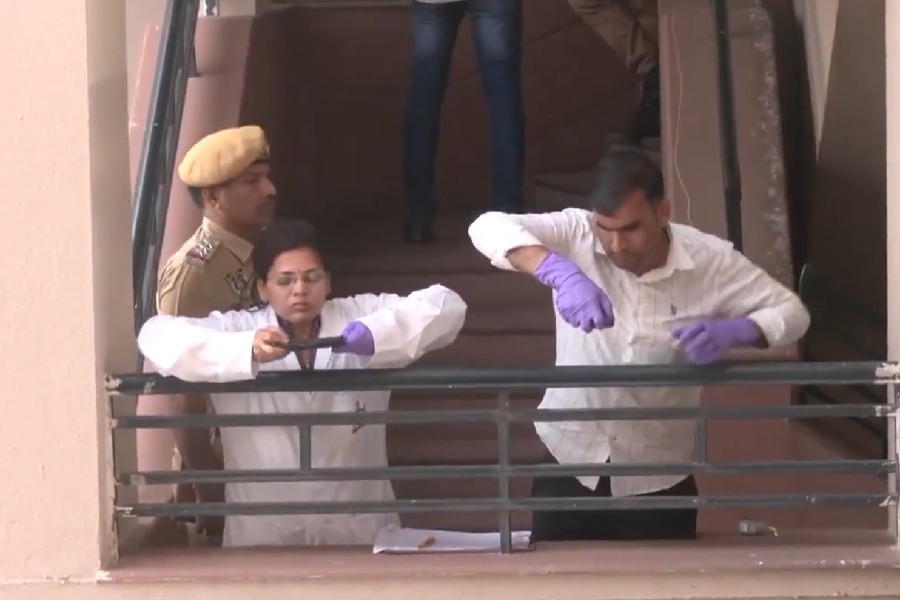
The human body has around 160 joints, all of which are in motion at some time or another as we sit, stand, walk and work in the office or at home. These joints are surrounded by protective fluid filled sacs called "bursa". The job of the bursa is to prevent friction between the bone, skin, muscles, ligaments and tendons that surround the joints. Constant overuse or infection of the bursa can result in a painful condition called "bursitis".
Painful bursitis can set in if the amount of fluid in the bursa increases. This can be due to constant excessive friction, an infection or trauma. The skin overlying the bursa becomes red, warm and the bursa itself is painful when pressed.
All 160 bursa do not become painful. Only five or six are notorious for causing problems. Bursitis of specific joints is often referred to by common descriptive terms such as "frozen shoulder" or "bricklayer's shoulder", "tennis elbow" or "miner's elbow", "housemaid's or clergyman's knee", "policeman's heel and "tailor's buttocks" (pain at the upper end of the thigh bone). Bursitis of the big toe is referred to as a "bunion".
Bursitis is precipitated in particular joints like the shoulder if it is used for repetitive movement like lifting a weighted object over the head, swimming, playing a bat and ball game like cricket, golf, tennis or badminton, In the elbow, activity with a flexed hand such as playing tennis, wringing clothes or even leaning on the elbow for long periods while sitting at a desk is likely to cause the problem. Prolonged sitting - particularly on a hard, uncushioned surface - causes pain at the point of contact. In short, sitting on a hard wooden surface leaning forward on a table can cause elbow and buttock pain.
The risk of developing bursitis increases with age, aggravating occupations or hobbies which involve repetitive use of the same joints. It is also more likely with other diseases like gout and diabetes.
When bursitis sets in, the joint suddenly feels itchy or stiff, is painful to touch or on movement and looks swollen.
Home treatment is often effective and can be summarised by the word PRICE (protection, rest, ice compression and elevation)
Apply ice. It reduces the swelling and inflammation, reduces muscle spasm and numbs pain. Alternate with moist heat.
Protect the joint from further strain with elastocrepe bandages, a wrist support, a shoulder brace, elbow guard or knee cap. These are available in medical stores.
If the pain is in the heel, wear soft cushioned footwear and do not walk barefoot.
Take mild painkillers like aspirin, or NSAIDs (non-steroidal anti-inflammatory agents) like Ibuprofen or just paracetemol.
You can usually wait for 10 days to two week before consulting a physician, unless the pain is accompanied by fever, there is redness or a rash, the area has a bluish discoloration like a bruise or there is a sharp pain on movement that brings all activity to a stand still.
It is often difficult to make an accurate diagnosis clinically. X-rays are helpful, but usually CT scans and MRIs are needed to be sure. Blood tests need to be done to rule out infection (the white blood cell count will be high), uric acid levels for gout, blood sugars for diabetes, and rheumatoid factor, C Reactive Protein etc for other types of arthritis.
In addition to specific treatment for underlying diseases, physicians usually recommend physiotherapy. If all else fails, injections into the bursa, or surgical decompression or removal of the bursa itself may be done.
To prevent bursitis
- Maintain ideal body weight
- Do flexion, stretching and strengthening exercises regularly, particularly if you play a sport.
- As soon as pain develops, rest the joint for a day or two to give it time to recover.
Dr Gita Mathai is a paediatrician with a family practice at Vellore. Questions on health issues may be emailed to her at yourhealthgm@yahoo.co.in










